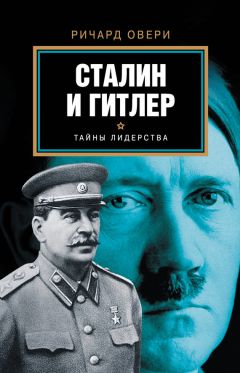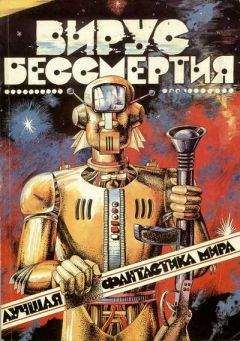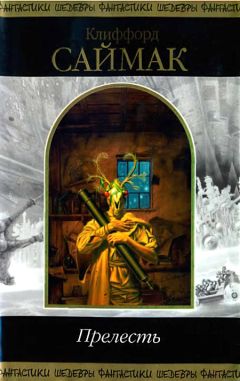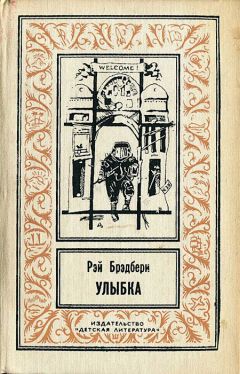59. McKale, Nazi Party Courts, pp. 144–5, 164, 178–80; M. Moll, ‘Steuerungsinstrument im “Ämterchaos”? Die Tagungen der Reichs-und Gauleiter der NSDAP’, Vierteljahrshefte für Zeitgeschichte, 49 (2001), pp. 236–8.
60. Allan, Comrades and Citizens, p. 88.
61. E. P. Mickiewicz, Soviet Political Schools: the Communist Party Adult Instruction System (New Haven, Conn., 1967), pp. 3–9,
89–101; M. David-Fox Revolution of the Mind: Higher Learning among the Bolsheviks, 1918–1929 (Ithaca, NY, 1997), pp. 84–7; T. Kirstein, ‘Das sowjetische Parteischulsystem’, in B. Meissner, G. Brunner and R. Löwenthal (eds) Einparteisystem und bürokratische Herrschaft in der Sowjetunion (Cologne, 1978), pp. 204–16.
62. Orlow, Nazi Party: II, pp. 188–92; Schmiechen-Ackermann, ‘Der “Blockwart”’, p. 589.
63. Schubert-Weller, Hitler-Jugend, pp. 182–3; on selection and admission see the testimony of P. Peterson in J. Steinhoff, P. Pechel and D. Showalter (eds) Voices of the Third Reich: an Oral History (Washington, DC, 1989), pp. 8–9.
64. Avtorkhanov, Communist Party Apparatus, pp. 79–80; Schmiechen-Ackermann, ‘Der “Blockwart”’, p. 586; M. Voslensky Nomenklatura: Anatomy of the Soviet Ruling Class (London, 1984), pp. 48–9.
65. Allan, Comrades and Citizens, p. 242.
66. Schmiechen-Ackermann, ‘Der “Blockwart”’, p. 589.
67. Gill, Rules of the Communist Party, pp. 165–6.
68. Schmiechen-Ackermann, ‘Der “Blockwart”’, pp. 581–3; Reibel, Fundament der Diktatur, pp. 104–5; Stephenson, Nazi Organisation of Women, p. 155; L. Pine ‘Creating Conformity: the Training of Girls in the Bund Deutscher Mädel’, European History Quarterly, 33 (2003), pp. 367–85.
69. Schmiechen-Ackermann, ‘Der “Blockwart”’, pp. 590–95; J. Noakes (ed.) Nazism 1919–1945: a Documentary Reader: Volume 4 (Exeter, 1998), pp. 96–100, ‘Service Instructions for Block Leaders. 1 June 1944’.
70. Reibel, Fundament der Diktatur, pp. 104–5, 191.
71. D. Rebentisch ‘Die “politische Beurteilung” als Herrschaftsinstrument der NSDAP’, in D. Peukert and J. Reulecke (eds) Die Reihen fast geschlossen: Beiträge zur Geschichte des Alltags unterm Nationalsozialismus (Wuppertal, 1981), pp. 107–28; Roth, Parteikreis und Kreisleiter, pp. 269–70.
72. Rebentisch, ‘Die “politische Beurteilung” ‘, p. 114.
73. Rebentisch, ‘Die “politische Beurteilung”’, pp. 108, 117–18.
74. Roth, Parteikreis und Kreisleiter, pp. 282–3.
75. S. Labin, Stalin’s Russia (London, 1949), p. 149; Tirado, The Komsomol’, pp. 220–22.
76. Labin, Stalin’s Russia, p. 153.
77. Boterbloem, Life and Death under Stalin, p. 125.
78. A. Smith I Was a Soviet Worker (London, 1937), p. 242.
79. Noakes, Nazism: Volume 4, pp. 97–8.
80. Vorländer, Die NSV: Dokumente, pp. 53–4.
81. G. Miller-Kipp (ed.) ‘Auch Du gehörst dem Führer’: Die Geschichte des Bundes Deutscher Mädel in Quellen und Dokumenten (Munich, 2001), p. 62.
82. See for example C. Arbogast Herrschaftsinstanzen der württembergischen NSDAP: Funktion, Sozialprofi l und Lebenswege einer regionalen NS-Elite 1920–1960 (Munich, 1998), pp. 116–22.
83. On the development of German bureaucracy J. Caplan ‘Profession as Vocation: The German Civil Service’, in G. Cocks and K. Jarausch (eds) German Professions, 1800–1950 (Oxford, 1990), pp. 163–82.
84. T. H. Rigby ‘Staffi ng USSR Incorporated: The Origins of the Nomenklatura System’, Soviet Studies, 40 (1988), pp. 526–30.
85. Labin, Stalin’s Russia, p. 50; Rigby, ‘Staffi ng USSR Incorporated’, pp. 531–3.
86. Labin, Stalin’s Russia, p. 50.
87. R. Koshar Social Life, Local Politics, and Nazism: Marburg 1880–1935 (Chapel Hill, NC, 1986), pp. 247–50.
88. J. H. Grill The Nazi Movement in Baden 1920–1945 (Chapel Hill, NC, 1983), pp. 247–8, 257, 265.
89. H. Fenske Bürokratie in Deutschland von späten Kaiserreich bis zur Gegenwart (Berlin, 1985), pp. 40–43.
90. Fenske, Bürokratie in Deutschland, pp. 44, 48; M. Broszat The Hitler State: the foundation and development of the internal structure of the Third Reich (London, 1981), pp. 242–3.
91. Orlow, Nazi Party: II, pp. 226–7; H. Mommsen Beamtentum in Dritten Reich: mit ausgewählten Quellen zur nationalsozialistischen Beamtenpolitik (Stuttgart, 1966), pp. 103–4.
92. Roth, Parteikreis und Kreisleiter, pp. 234–5.
93. Roth, Parteikreis und Kreisleiter, p. 195.
94. Roth, Parteikreis und Kreisleiter, pp. 213, 215.
95. Orlow, Nazi Party: II, pp. 228–9.
96. Schmiechen-Ackermann, ‘Der “Blockwart”’, p. 586; Orlow, Nazi Party: II, pp. 72–3.
97. Avtorkhanov, Communist Party Apparatus, pp. 143, 199.
98. Münz, Führer durch die Behörden, pp. 6–9.
99. Roth, Parteikreis und Kreisleiter, pp. 122–3.
100. Roth, Parteikreis und Kreisleiter, pp. 139–44.
101. Broszat, Hitler State, pp. 112–17; on the Reichsstatthalter see H.-J. Sengotta Der Reichsstatthalter in Lippe 1933 bis 1939.
Reichsrechtliche Bestimmungen und politische Praxis (Detmold, 1976), pp. 41–59, 408–9.
102. Moll, ‘Steuerungsinstrument’, pp. 215–72; more generally on the Gauleiter see P. Hiittenberger Die Gauleiter (Stuttgart, 1969).
103. Fainsod, How Russia is Ruled, p. 199.
104. Fainsod, Smolensk under Soviet Rule, p. 98.
105. Mommsen, Beamtentum, p. 103.
106. Gill, Rules of the Communist Party, pp. 44–7.
107. Avtorkhanov, Communist Party Apparatus, pp. 103–4; Pons, ‘Stalinism and Party Organisation’, pp. 108–9.
108. B. Harasymiw Soviet Communist Party Offi cials: A study in organizational roles and change (New York, 1996), pp. 85–8.
109. B. Meissner ‘Die besonderen Wesenszüge der sowjetschen Bürokratie und die Wandlungsmöglichkeiten des Einparteisystems’ in Meissner, Brunner and Löwenthal, Einparteisystem, pp. 73–4; R. di Leo Occupazione e salari neWURSS 1950–1977 (Milan, 1980), pp. 38–9, 50.
110. Harasymiw, Communist Party Offi cials, p. 30.
111. Fenske, Bürokratie in Deutschland, pp. 45–7.
112. Fenske, Bürokratie in Deutschland, pp. 48–51.
113. See R. Koehl The Black Corps: the Structure and Power Struggles of the Nazi SS (Madison, Wise, 1983); the process of infi ltration and control is charted in A. Speer The Slave State: Heinrich Himmlers Masterplan for SS Supremacy (London, 1981).
114. Meissner, ‘Der besonderen Wesenzüge’, p. 77.
115. Fenske, Bürokratie in Deutschland, p. 45.
116. The party revived after Stalin’s death. See Y. Gorlizki ‘Party Revivalism and the Death of Stalin’, Slavic Review, 54 (1995), pp. 1–22.
117. See for example A. Unger The Totalitarian Party: Party and People in Nazi Germany and Soviet Russia (London, 1974).
118. Roth, Parteikreis und Kreisleiter, p. 143.
119. Harasymiw, Communist Party Offi cials, pp. 136–7.
120. Boterbloem, Life and Death under Stalin.
121. S. Davies ‘“Us Against Them”: Social Identity in Soviet Russia, 1934–41’, Russian Review, 56 (1997), pp. 70–89.
1. M. Fainsod How Russia is Ruled (Cambridge, Mass., 1967), p. 424.
2. N. Baynes (ed.) Hitler’s Speeches 1919–1939 (2 vols, Oxford, 1942), vol i., p. 504.
3. R. Tucker and S. Cohen (eds) The Great Purge Trial (New York, 1965), p. xv.
4. Fainsod, How Russia is Ruled, p. 423.
5. N. Leites and E. Bernant Rituals of Liquidation: the Case of the Moscow Trials (Glencoe, Ill., 1954), pp. 318, 322–3; see too People’s Commissariat of Justice of the USSR Report of Court Proceedings in the case of the Anti-Soviet ‘Bloc of Rights and Trotskyites’ (Moscow, 1938), pp. 625–7.
6. J. Stalin Works (13 vols, Moscow, 1952–5), vol. xiii, pp. 110–11, ‘talk with the German author Emil Ludwig’, 13 December 1931.
7. T. Rees and A. Thorpe (eds) International Communism and the Communist International 1919–1943 (Manchester, 1998), p. 35.
8. Fainsod, How Russia is Ruled, p. 159.
9. Leites and Bernant, Rituals of Liquidation, p. 12.
10. E. Alexander Der Mythos Hitler (Zurich, 1937), p. 395.
11. Baynes, Hitler’s Speeches, vol. i, p. 504, proclamation at the party congress, 1 September 1933.
12. Baynes, Hitler’s Speeches, vol. i, p. 299, Hitler speech to the Reichstag, 13 July 1934. Hitler reminded his audience that communism had brought ‘mass-terrorism’ to all parts of the world.
13. P. Weindling Health, Race and German Politics between National Unifi cation and Nazism 1870–1945 (Cambridge, 1989), pp. 382–5.
14. F. S. Zuckermann The Tsarist Secret Police in Russian Society, 1880–1917 (London, 1996), pp. 19–27; J. Daly The Security Police and Politics in Late Imperial Russia’, in A. Geifman (ed.) Russia under the Last Tsar: Opposition and Subversion (Oxford, 1999), pp. 217–34.
15. M. Broszat The Hitler State: the foundation and development of the internal structure of the Third Reich (London, 1981), p. 332. On political police forces see F Wilhelm Die Polizei im NS-Staat (Paderborn, 1997), pp. 24–35.
16. G. Leggett The Cheka: Lenin’s Political Police (Oxford, 1981), pp. 16–22, 342–6, 351–2; R. Conquest (ed.) The Soviet Police System (London, 1968), pp. 13–18.
17. Fainsod, How Russia is Ruled, pp. 425–8.
18. R. Shailet ‘Stalinism and Soviet Legal Culture’, in R. Tucker (ed.) Stalinism: Essays in Historical Interpretation (New York,
1977), pp. 164–6.
19. R. W. Thurston Life and Terror in Stalin’s Russia 1934–1941 (London, 1996), pp. 22–3; J. A. Getty and O. V. Naumov (eds) The Road to Terror: Stalin and the Self-Destruction of the Bolsheviks 1932–1939 (New Haven, Conn., 1999), pp. 145–7; D. Rayfi eld Stalin and his Hangmen (London, 2004), pp. 239–40.
20. K. McDermott and J. Agnew The Comintern: A History of International Communism from Lenin to Stalin (London, 1996), pp. 148, 151.
21. B. A. Starkov The Trial that was not Held’, Europe – Asia Studies, 46 (1994), pp. 1308–9.
22. E. Ginzburg Into the Whirlwind (London, 1967), pp. 130–37.
23. V. Z. Rogovin 1937: Stalin’s Year of Terror (Oak Park, Mich., 1998), pp. 286–8.
24. Starkov, The Trial that was not Held’, pp. 1304–5; Rogovin, 1937, pp. 497–9.
25. Starkov, The Trial that was not Held’, p. 1300; Thurston, Life and Terror, pp. 59–60.
26. Thurston, Life and Terror, pp. 124–5, 129–31; A. Knight Beria: Stalin’s First Lieutenant (London, 1993), pp. 90–93; G. T. Rittersporn ‘Extra-Judicial Repression and the Courts: Their Relationship in the 1930s’, in P. H. Solomon (ed.) Reforming justice in Russia, 1864–1996 (NewTork, 1997), pp. 216–19.
27. S. Beria Beria, My Father: Inside Stalin’s Kremlin (London, 2001), p. 44.
28. In general see M. Parrish The Lesser Terror: Soviet State Security 1939–1953 (Westport, Conn., 1996).
29. Baynes, Hitler’s Speeches, vol. i., p. 220.




